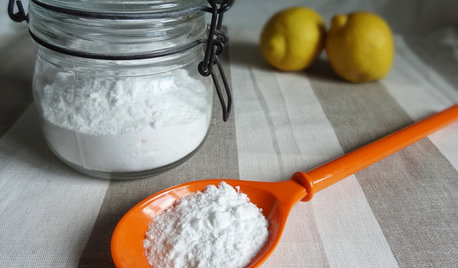EC and Electrolytes in general
sirsedum
14 years ago
Related Stories

PLANTING IDEASWant a More Colorful, Natural Garden? Try a Perennial Meadow
Spend less time tending and more time taking in the sights by improving on Victorian and prairie garden designs
Full Story
BATHROOM DESIGNHow to Light Your Bathroom Right
Get ready for your close-up in a bath that's a sanctuary with task, accent, decorative and ambient lighting
Full Story
KITCHEN COUNTERTOPSKitchen Counters: Granite, Still a Go-to Surface Choice
Every slab of this natural stone is one of a kind — but there are things to watch for while you're admiring its unique beauty
Full Story
LANDSCAPE DESIGNNatural Swimming Pools: More Beauty, No Chemicals
Keep your skin and the environment healthy with a pool that cleans itself, naturally
Full Story
KITCHEN DESIGNGet a Grip on Kitchen Cabinets With the Right Knobs and Pulls
Here's how to pair the right style, type and finish of cabinet hardware with your kitchen style
Full Story
HOUSEKEEPINGBaking Soda: The Amazing All-Natural Cleanser You Already Own
Battle grime, banish odors and freshen clothes with this common nontoxic cupboard staple
Full Story
KITCHEN DESIGNNew This Week: 4 Kitchens That Embrace Openness and Raw Materials
Exposed shelves, open floor plans and simple materials make these kitchens light and airy
Full Story
DECORATING GUIDES10 Ways to Hide That Air Conditioner
Feeling boxed in designing around your mini-split air conditioner? Try one of these clever disguises and distractions
Full Story
BEDROOMS13 Simple Steps to a Perfectly Made Bed
Drift off to dreamland in a delightfully soothing, artfully dressed bed worthy of a posh hotel
Full Story
KITCHEN APPLIANCES9 Places to Put the Microwave in Your Kitchen
See the pros and cons of locating your microwave above, below and beyond the counter
Full Story






taxonomist
brandon7 TN_zone7
Related Professionals
Lakewood Landscape Architects & Landscape Designers · Hartford Landscape Contractors · Bergenfield Landscape Contractors · Canton Landscape Contractors · Mastic Beach Landscape Contractors · Pine Hills Landscape Contractors · Soddy Daisy Landscape Contractors · West Haverstraw Landscape Contractors · Winchester Landscape Contractors · Tyngsboro Landscape Contractors · Lexington Fence Contractors · San Mateo Fence Contractors · Voorhees Fence Contractors · Castaic Fence Contractors · Washington Fence Contractorslycopus
brandon7 TN_zone7
taxonomist
brandon7 TN_zone7
brandon7 TN_zone7
lycopus
brandon7 TN_zone7
taxonomist
ronalawn82
brandon7 TN_zone7
albert_135 39.17°N 119.76°W 4695ft.
taxonomist
justaguy2
justaguy2
justaguy2